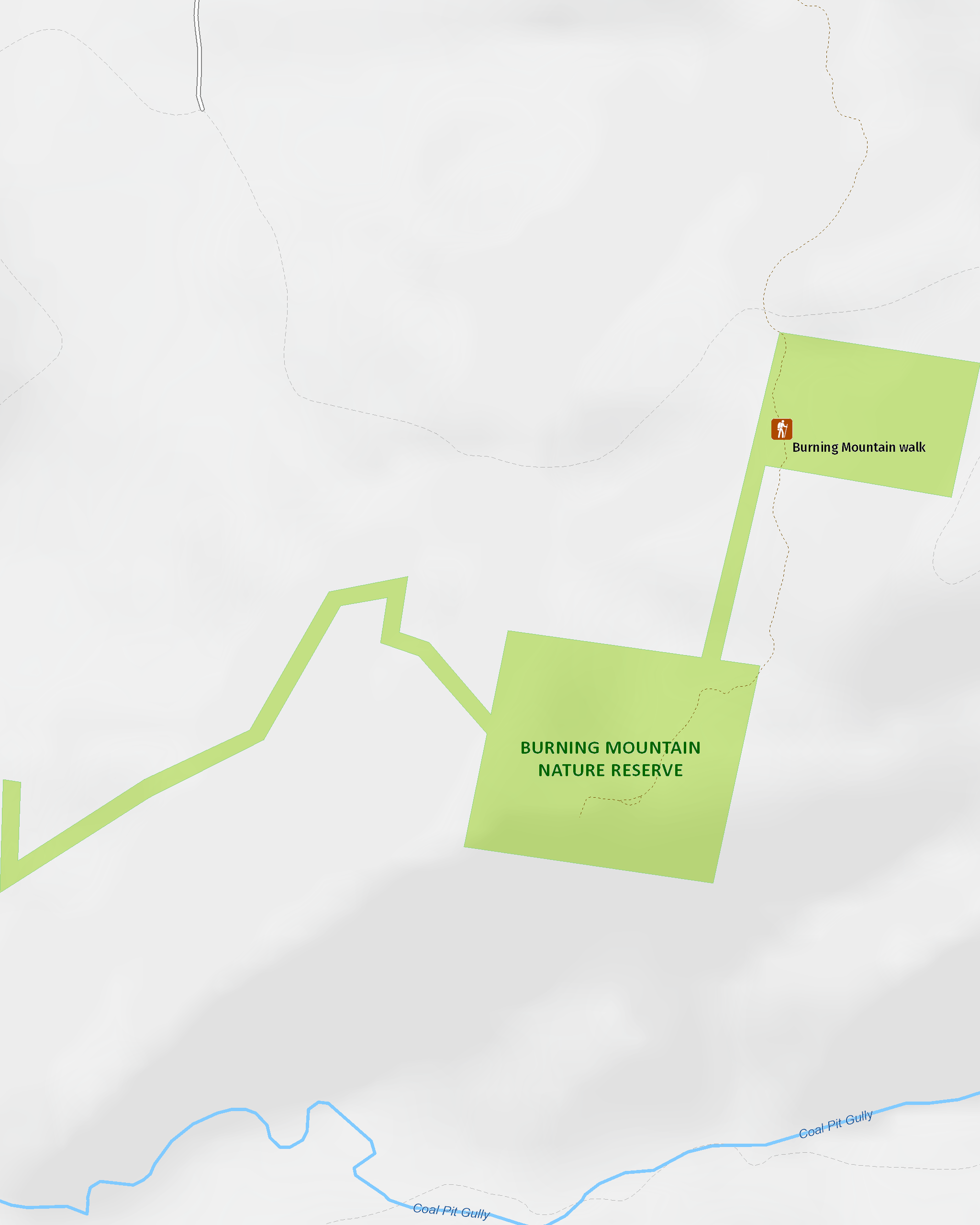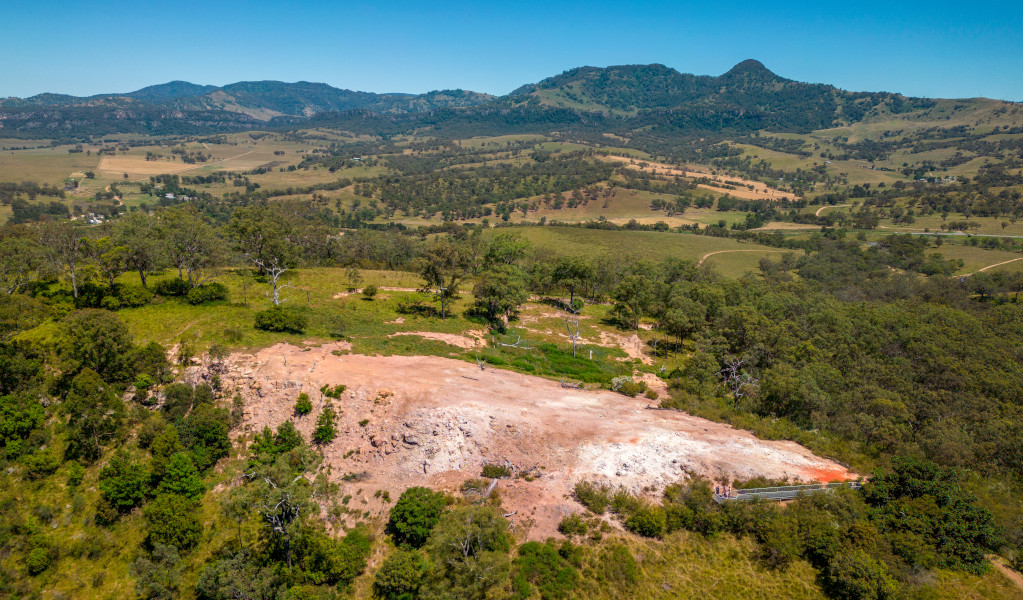Burning Mountain Nature Reserve
Overview
Home to Australia’s only naturally burning coal seam, Burning Mountain Nature Reserve is great for school excursions and is packed with day walks, scenic views, birdwatching and picnicking opportunities.
Read more about Burning Mountain Nature Reserve
Sometimes, the quiet corners of a state hold the biggest surprises. Burning Mountain Nature Reserve is tucked away off New England Highway, but make the stop in your car and what you’ll discover is an ancient phenomenon right beneath your feet.
To traditional Aboriginal owners, it’s the fiery tears of a woman long since turned to stone by Biami, the sky god. Early explorers assumed Burning Mountain's billowing smoke and peak of grey, smouldering ash was an active volcano. It’s actually a combusting coal seam, that’s been smouldering under the surface of the earth for an estimated 5,500 years. The main attraction isn’t all though; it’s also the perfect place for a day walk, with scenic views across the valley.
A popular pit stop with travellers, Burning Mountain Nature Reserve is a great place to pause for a break and soak up the unusual geological conditions. In fact, there’s nothing else quite like it in Australia. Bring binoculars for birdwatching, a water bottle, and sturdy shoes for a walk into the heart of the action. There’s even an information rotunda, ensuring you get the most out of your visit to this special place.
Local alerts
For the latest updates on fires, closures and other alerts in this area, see https://www.nationalparks.nsw.gov.au/visit-a-park/parks/burning-mountain-nature-reserve/local-alerts
Contact
- in the Country NSW region
Burning Mountain Nature Reserve is always open but may have to close at times due to poor weather or fire danger.
-
-
Scone office
02 6540 2300
Contact hours: Monday to Friday, 8.30am to 4.30pm. - 19 Hayes Street, Scone NSW 2337
-
Email: npws.barringtontops@environment.nsw.gov.au
-
Scone office
Visitor info
All the practical information you need to know about Burning Mountain Nature Reserve.
Map

Map legend

Maps and downloads
Nearby towns
Murrurundi (17 km)
Murrurundi has remained faithful to its pastoral roots and enjoys a fine legacy of historic houses and public buildings. In fact, the National Trust has declared the main street of Murrurundi an Urban Con servation Area. Today, you can explore the history of Murrurundi on a heritage walk that takes in churches, hotels and the original telegraph office.
Scone (24 km)
Nestled in the picturesque Upper Hunter, Scone is known as the horse capital of Australia.
Muswellbrook (49 km)
Muswellbrook is a vibrant country town surrounded by vineyards and horse studs. It straddles the Hunter River in the fertile wine-growing region of the Upper Hunter. Enjoy the local produce while you take in the natural beauty of the surrounding wilderness.
Learn more
Burning Mountain Nature Reserve is a special place. Here are just some of the reasons why:
Aboriginal legend

Traditionally, Burning Mountain was part of a vast territory owned by the Wanaruah people, which stretched from Broke to the Liverpool Range. Wanaruah mythology, passed through generations, tells the story of Burning Mountain like this: one day, the Gumaroi people, north of the Liverpool Range, sent a raiding party south to steal Wanaruah women. The Wiradjuri people to the west warned the Wanaruah, who sent their best warriors out for a great battle. One of the Wanaruah wives decided to wait for her husband to return, settling down near the Liverpool Range. When he didn’t come back, she was devastated. Crying, she asked Biami, the sky god, to take her life. Instead, he turned her into stone, and as she did so, her tears became fire and set the mountain alight for all eternity.
An unusual geological event

The scientific explanation for Burning Mountain is a slowly combusting coal seam. At the moment, the exact location of the fire is a mystery, though we know it’s about 30m below the ground and heading south – meaning Burning Mountain actually moves at about 1m a year. It’s estimated the fire has been burning for as much as 5,500 years, and as it eats through the coal, rocks slip into the gap, causing fissures and slumping at the surface level. Be sure to wear sturdy footwear and stay on the formed track. Not only that, but watch out for fossils, too: 200 million years ago, this entire area was covered by ocean.
The colonial story

The Liverpool Range was always a difficult barrier to the sweeping plains beyond, which colonial settlers coveted for their potential as rich grazing land. Throughout the 1800s, many explorers tried different routes across the area, from ‘Pandora’s Pass’, first crossed by Allan Cunningham in 1823, to the Hanging Rock area, first crossed by Henry Dangar. As you visit the reserve and follow Burning Mountain walk, imagine tackling the landscape without the contemporary luxuries of cars and highways.
Education resources (1)
What we're doing
Burning Mountain Nature Reserve has management strategies in place to protect and conserve the values of this park. View the detailed park and fire management documents.

